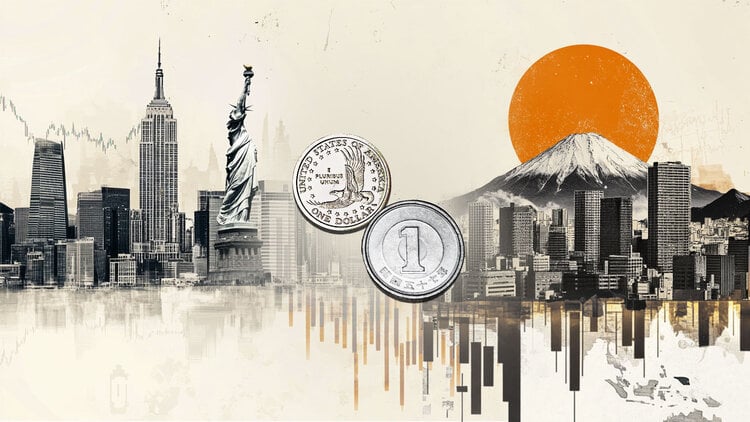- The DXY trades with gains in the last hours of the session.
- Investors are eagerly awaiting the release of Non-Farm Payrolls, Average Hourly Earnings, December Unemployment Rate and FOMC Minutes.
- Rising US bond yields gave traction to the Dollar.
He US dollar (USD) It began trading at 102.10, which marked a notable rise in the index. This bullish move can be explained by markets awaiting direction, with investors seeking refuge in the USD ahead of key labor market reports due this week.
At the last meeting of 2023, the Federal Reserve took a dovish stance, remaining optimistic about easing inflation trends and ruling out rate hikes in 2024. Despite an indicative easing forecast of 75 basis points, future actions may be altered by incoming data, such as the imminent December labor reports. Market speculation for March and May anticipates rate cuts and little chance of the easing cycle starting at the next January meeting, which could limit the dollar's momentum.
Daily Market Moves: Dollar Strengthens on Recovery in US Yields Despite Weak S&P Revisions
- The US Dollar sees positive trading ahead of labor market data, demonstrating bullish momentum.
- December manufacturing PMI revisions reported by S&P Global came in at 47.9, below the consensus estimate of 48.2, indicating a slowdown in the manufacturing sector.
- This week, the United States will report key labor market numbers for December, including the unemployment rate, Nonfarm Payrolls, and average hourly earnings. Investors are also eagerly awaiting the FOMC minutes from the last meeting of 2023 this Wednesday.
- US bond yields are on the rise, with the 2-, 5-, and 10-year yields trading at 4.32%, 3.91%, and 3.94%, respectively.
- According to CME's FedWatch tool, markets have priced in no hike at the next January meeting, with a 15% chance of a rate hike. Markets have also forecast rate cuts for March and May 2024.
Technical Analysis: DXY's bearish dominance persists despite signs of a possible short-term bullish reversal
The Relative Strength Index (RSI) paints an optimistic picture as it shows a positive slope into negative territory. This suggests growing buying momentum as the index could be embarking on a possible reversal after reaching oversold conditions.
The Moving Average Convergence Divergence (MACD) further reinforces this bullish narrative, presenting ascending green bars. This indicates strengthening bullish momentum and a possible continuation of a short-term uptrend.
However, looking at the simple moving averages (SMA), the index is trading below the 20-day, 100-day, and 200-day SMA. This predominantly reveals bearish pressure in the market, negating the short-term bullish signals from the RSI and MACD.
Support levels: 102.00, 102.50, 101.30.
Resistance Levels: 102.40 (20-day SMA), 102.50, 102.70.
US Dollar FAQ
What is the US Dollar?
The United States Dollar (USD) is the official currency of the United States of America, and the “de facto” currency of a significant number of other countries where it is in circulation alongside local banknotes. According to 2022 data, it is the most traded currency in the world, with more than 88% of all global currency exchange operations, equivalent to an average of $6.6 trillion in daily transactions.
After World War II, the USD took over from the pound sterling as the world's reserve currency.
How do the decisions of the Federal Reserve affect the Dollar?
The single most important factor influencing the value of the US Dollar is monetary policy, which is determined by the Federal Reserve (Fed). The Fed has two mandates: achieve price stability (control inflation) and promote full employment. Your main tool to achieve these two objectives is to adjust interest rates.
When prices rise too quickly and inflation exceeds the 2% target set by the Fed, the Fed raises rates, which favors the price of the dollar. When Inflation falls below 2% or the unemployment rate is too high, the Fed can lower interest rates, which weighs on the Dollar.
What is Quantitative Easing and how does it influence the Dollar?
In extreme situations, the Federal Reserve can also print more dollars and enact quantitative easing (QE). QE is the process by which the Fed substantially increases the flow of credit into a clogged financial system. This is an unconventional policy measure used when credit has dried up because banks do not lend to each other (for fear of counterparty default). It is a last resort when a simple lowering of interest rates is unlikely to achieve the necessary result. It was the Fed's weapon of choice to combat the credit crunch that occurred during the Great Financial Crisis of 2008. It involves the Fed printing more dollars and using them to buy US government bonds, primarily from financial institutions. QE usually leads to a weakening of the US Dollar.
What is quantitative tightening and how does it influence the US dollar?
Quantitative tightening (QT) is the reverse process by which the Federal Reserve stops purchasing bonds from financial institutions and does not reinvest the principal of maturing portfolio securities in new purchases. It is usually positive for the US dollar.
Source: Fx Street
I am Joshua Winder, a senior-level journalist and editor at World Stock Market. I specialize in covering news related to the stock market and economic trends. With more than 8 years of experience in this field, I have become an expert in financial reporting.







